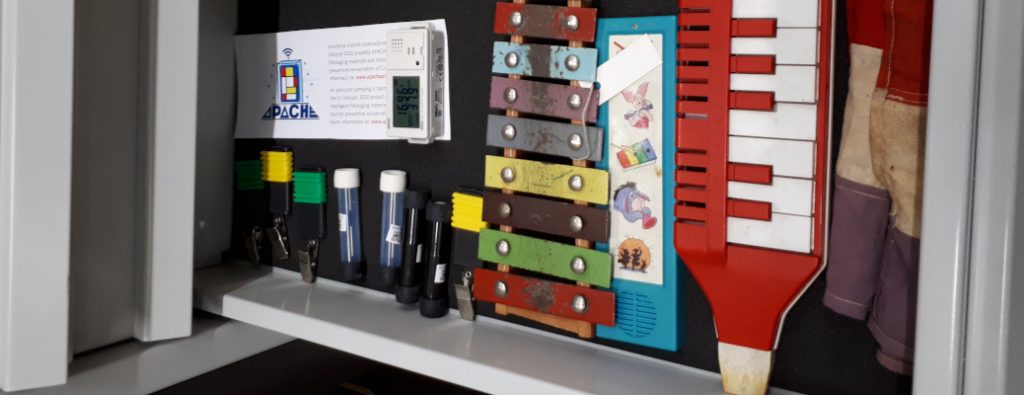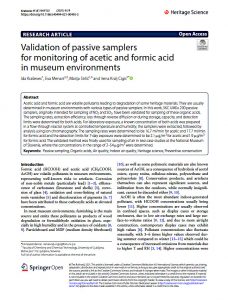Researchers from the Heritage Science Lab Ljubljana and National Museum of Slovenia recently published the article titled: “Validation of passive samplers for monitoring of acetic and formic acid in museum environments”. This study was done in the frame of the EU research project APACHE.
Acetic acid and formic acid are volatile, indoor generated pollutants that can lead to degradation of some of valuable heritage materials (non-noble metals (lead), carbonates (limestone and shells), glass, natural resin varnishes, pigments). They are usually determined in museum environments with various types of passive samplers.
SKC UMEx 200 passive samplers, originally intended for sampling of NO2 and SO2, have been validated for sampling of two organic acids, formic and acetic with the analytical determination of the following parameters for both acids: sampling rates, extraction efficiency, loss through reverse diffusion or during storage, capacity, and detection limits. The sampling rates were determined to be 16.7 mL/min for acetic and 17.7 mL/min for formic acid, which is comparable to the rates published for sampling of NO2 and SO2 with these samplers. The detection limits for 7-day exposure were determined to be 2.1 μg/m3 for acetic and 1.9 μg/m3 for formic acid, which is suitable for monitoring of less polluted indoor environments.
The study is important as total cost of air quality sampling in museums can be reduced, since with low number of samplers used provide analysis of several relevant compounds at the same time.
The validated method was tested for sampling of air in two case studies (display case and storage drawer) at the National Museum of Slovenia, where the concentrations in the range of 2–54 μg/m3 were determined.
The methodology will be explored as a reference method as part of the EU Horizon IPERION HS project, where a suite of environmental monitoring methods are being tested to become part of its Reference Environmental Monitoring Kit.
See related news: Novel Pollutant Monitoring at National Museum of Slovenia


